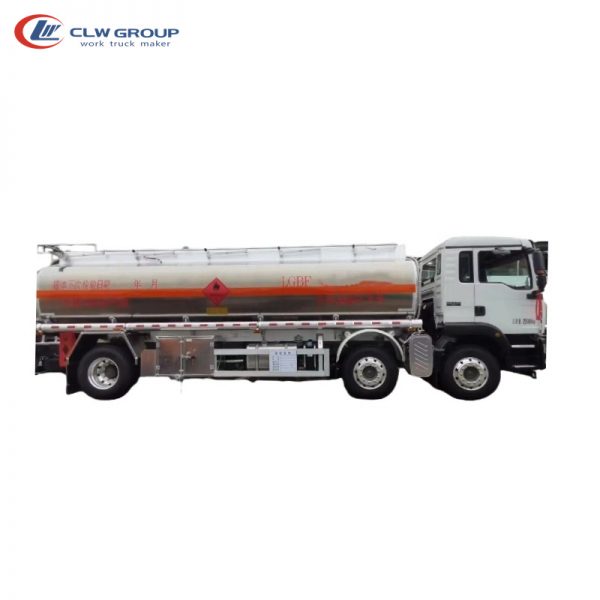Introduction
Work truck drivers play a crucial role in our economy by transporting goods and materials to various destinations. However, the nature of their job exposes them to numerous safety hazards on the road. In this comprehensive guide, we will explore the key factors affecting work truck driver safety and provide actionable strategies to mitigate risks and ensure the well-being of these essential workers.
Section 1: Understanding the Risks
1.1 Overview of Work Truck Driver Safety
Work truck drivers face a unique set of risks compared to other drivers due to the size and weight of their vehicles. Factors such as long hours on the road, tight delivery schedules, and unpredictable weather conditions can further amplify these risks. It is essential to understand the specific challenges that work truck drivers encounter to develop effective safety measures.
1.2 Common Hazards Faced by Work Truck Drivers
- Fatigue: Long hours of driving can lead to driver fatigue, impairing judgment and reaction times.
- Distracted Driving: Use of mobile phones, GPS devices, and other distractions can divert a driver's attention from the road.
- Vehicle Maintenance: Poorly maintained trucks can increase the likelihood of accidents due to mechanical failures.
- Weather Conditions: Adverse weather such as rain, snow, or fog can reduce visibility and traction, increasing the risk of accidents.
- Other Road Users: Work truck drivers must navigate through traffic, interact with pedestrians, and share the road with various vehicles, posing additional challenges.
Section 2: Strategies for Work Truck Driver Safety
2.1 Training and Education
Providing comprehensive training to work truck drivers is crucial for promoting safety on the road. Training programs should cover defensive driving techniques, hazard awareness, and emergency procedures. Additionally, educating drivers about the importance of rest breaks and proper vehicle maintenance can help reduce the likelihood of accidents.

2.2 Implementing Safety Policies
Employers should establish clear safety policies and procedures to guide work truck drivers in their daily operations. These policies may include guidelines on seatbelt usage, speed limits, and restrictions on mobile phone use while driving. Regular safety meetings and performance evaluations can help reinforce these policies and ensure compliance.
2.3 Use of Technology
Advancements in technology offer valuable tools for enhancing work truck driver safety. Telematics systems can monitor driver behavior, track vehicle performance, and provide real-time feedback to improve driving habits. Additionally, features such as collision warning systems, lane departure alerts, and automatic emergency braking can help prevent accidents and reduce the severity of collisions.
2.4 Regular Vehicle Maintenance
Maintaining work trucks in optimal condition is essential for preventing mechanical failures that could lead to accidents. Employers should implement a regular maintenance schedule and ensure that drivers conduct pre-trip inspections to identify any issues before hitting the road. Addressing maintenance issues promptly can help avoid breakdowns and keep drivers safe.
2.5 Encouraging Healthy Habits
Promoting overall health and well-being among work truck drivers can have a positive impact on safety. Encouraging drivers to prioritize sleep, exercise, and healthy eating habits can help combat fatigue and improve alertness on the road. Employers can also provide resources for managing stress and mental health to support drivers in maintaining a healthy work-life balance.
Section 3: Regulatory Compliance and Industry Standards
3.1 Compliance with Hours of Service Regulations
Work truck drivers are subject to Hours of Service (HOS) regulations that limit the amount of time they can spend behind the wheel. Employers must ensure that drivers adhere to these regulations to prevent fatigue-related accidents. Implementing electronic logging devices (ELDs) can help track driving hours accurately and ensure compliance with HOS rules.
3.2 Industry Safety Standards
Various organizations, such as the Federal Motor Carrier Safety Administration (FMCSA) and the Occupational Safety and Health Administration (OSHA), set industry standards to promote work truck driver safety. Employers should stay informed about these standards and implement best practices to create a safe working environment for their drivers. Regular audits and inspections can help identify areas for improvement and ensure compliance with regulations.
Section 4: Emergency Preparedness and Response
4.1 Developing Emergency Response Plans
In the event of an accident or emergency situation, work truck drivers must be prepared to respond swiftly and effectively. Employers should develop comprehensive emergency response plans that outline procedures for contacting emergency services, providing first aid, and managing potential hazards at the scene. Conducting regular drills and training exercises can help drivers familiarize themselves with these protocols and respond confidently in stressful situations.
4.2 Access to Support Services
Work truck drivers may encounter challenging situations on the road that affect their mental and emotional well-being. Employers should provide access to support services such as employee assistance programs (EAPs) and counseling resources to help drivers cope with stress, trauma, or other mental health issues. Creating a supportive work environment that prioritizes employee well-being can improve morale and productivity while promoting safety on the road.
Conclusion
Ensuring the safety of work truck drivers is a shared responsibility that requires collaboration between employers, drivers, regulatory authorities, and industry stakeholders. By understanding Boom truck interior features faced by work truck drivers, implementing proactive safety measures, and promoting a culture of safety within the industry, we can create a safer environment for these essential workers. Through ongoing education, training, and adherence to best practices, we can safeguard work truck drivers and reduce the incidence of accidents on our roads.
